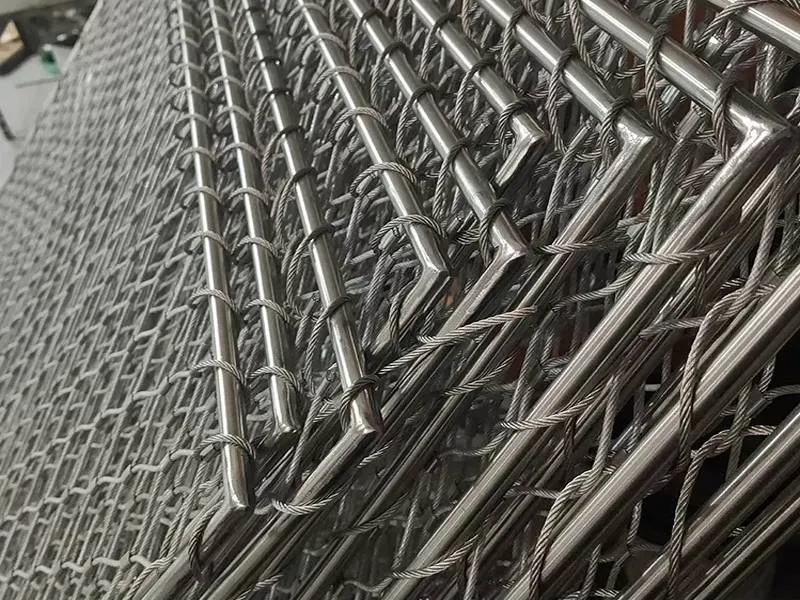- Industrial zone, South of Anping Town, Hengshui, Hebei, China.
- sales@hfpetromesh.com
- +86-18931809706
 Afrikaans
Afrikaans  Albanian
Albanian  Amharic
Amharic  Arabic
Arabic  Armenian
Armenian  Azerbaijani
Azerbaijani  Basque
Basque  Belarusian
Belarusian  Bengali
Bengali  Bosnian
Bosnian  Bulgarian
Bulgarian  Catalan
Catalan  Cebuano
Cebuano  Corsican
Corsican  Croatian
Croatian  Czech
Czech  Danish
Danish  Dutch
Dutch  English
English  Esperanto
Esperanto  Estonian
Estonian  Finnish
Finnish  French
French  Frisian
Frisian  Galician
Galician  Georgian
Georgian  German
German  Greek
Greek  Gujarati
Gujarati  Haitian Creole
Haitian Creole  hausa
hausa  hawaiian
hawaiian  Hebrew
Hebrew  Hindi
Hindi  Miao
Miao  Hungarian
Hungarian  Icelandic
Icelandic  igbo
igbo  Indonesian
Indonesian  irish
irish  Italian
Italian  Japanese
Japanese  Javanese
Javanese  Kannada
Kannada  kazakh
kazakh  Khmer
Khmer  Rwandese
Rwandese  Korean
Korean  Kurdish
Kurdish  Kyrgyz
Kyrgyz  Lao
Lao  Latin
Latin  Latvian
Latvian  Lithuanian
Lithuanian  Luxembourgish
Luxembourgish  Macedonian
Macedonian  Malgashi
Malgashi  Malay
Malay  Malayalam
Malayalam  Maltese
Maltese  Maori
Maori  Marathi
Marathi  Mongolian
Mongolian  Myanmar
Myanmar  Nepali
Nepali  Norwegian
Norwegian  Norwegian
Norwegian  Occitan
Occitan  Pashto
Pashto  Persian
Persian  Polish
Polish  Portuguese
Portuguese  Punjabi
Punjabi  Romanian
Romanian  Russian
Russian  Samoan
Samoan  Scottish Gaelic
Scottish Gaelic  Serbian
Serbian  Sesotho
Sesotho  Shona
Shona  Sindhi
Sindhi  Sinhala
Sinhala  Slovak
Slovak  Slovenian
Slovenian  Somali
Somali  Spanish
Spanish  Sundanese
Sundanese  Swahili
Swahili  Swedish
Swedish  Tagalog
Tagalog  Tajik
Tajik  Tamil
Tamil  Tatar
Tatar  Telugu
Telugu  Thai
Thai  Turkish
Turkish  Turkmen
Turkmen  Ukrainian
Ukrainian  Urdu
Urdu  Uighur
Uighur  Uzbek
Uzbek  Vietnamese
Vietnamese  Welsh
Welsh  Bantu
Bantu  Yiddish
Yiddish  Yoruba
Yoruba  Zulu
Zulu
- Afrikaans
- Albanian
- Amharic
- Arabic
- Armenian
- Azerbaijani
- Basque
- Belarusian
- Bengali
- Bosnian
- Bulgarian
- Catalan
- Cebuano
- Corsican
- Croatian
- Czech
- Danish
- Dutch
- English
- Esperanto
- Estonian
- Finnish
- French
- Frisian
- Galician
- Georgian
- German
- Greek
- Gujarati
- Haitian Creole
- hausa
- hawaiian
- Hebrew
- Hindi
- Miao
- Hungarian
- Icelandic
- igbo
- Indonesian
- irish
- Italian
- Japanese
- Javanese
- Kannada
- kazakh
- Khmer
- Rwandese
- Korean
- Kurdish
- Kyrgyz
- Lao
- Latin
- Latvian
- Lithuanian
- Luxembourgish
- Macedonian
- Malgashi
- Malay
- Malayalam
- Maltese
- Maori
- Marathi
- Mongolian
- Myanmar
- Nepali
- Norwegian
- Norwegian
- Occitan
- Pashto
- Persian
- Polish
- Portuguese
- Punjabi
- Romanian
- Russian
- Samoan
- Scottish Gaelic
- Serbian
- Sesotho
- Shona
- Sindhi
- Sinhala
- Slovak
- Slovenian
- Somali
- Spanish
- Sundanese
- Swahili
- Swedish
- Tagalog
- Tajik
- Tamil
- Tatar
- Telugu
- Thai
- Turkish
- Turkmen
- Ukrainian
- Urdu
- Uighur
- Uzbek
- Vietnamese
- Welsh
- Bantu
- Yiddish
- Yoruba
- Zulu
What is Bar Grating? | Comprehensive Guide to Bar Grating Types and Applications
Understanding Bar Grating An Overview
Bar grating, also referred to as grating or metal grating, is a versatile construction material widely used in various industries. It consists of a series of parallel bars, typically made from metal, that are spaced apart to form an open grid. The design allows for strength and stability while simultaneously facilitating the passage of light, air, and liquids. This unique combination of attributes makes bar grating an essential component in numerous applications, from industrial flooring to safety walkways.
Understanding Bar Grating An Overview
Bar grating is also widely utilized in architectural designs. It is employed in various structures, including bridges, mezzanines, and building facades. The open design not only contributes to a visually appealing aesthetic but also enhances ventilation and natural lighting. This makes it an excellent choice for modern constructions that prioritize both functionality and design. Architects often appreciate the structural integrity and lightweight nature of bar grating, allowing for innovative designs without compromising safety.
what is bar grating

When it comes to materials, bar grating is primarily made from steel, aluminum, or fiberglass. Steel bar grating is particularly favored for its strength and durability, making it ideal for heavy-duty applications. It is typically used in environments where mechanical strength is paramount, such as in industrial plants or factories. Aluminum grating, on the other hand, offers a lighter weight option with excellent corrosion resistance, making it suitable for outdoor and marine applications. Fiberglass grating is popular for its non-conductive properties and resistance to chemicals, making it ideal for environments that involve hazardous materials.
The manufacturing process of bar grating involves several steps, including cutting, welding, and treatment. The bars are usually welded together at the intersection points to create a stable structure. After fabrication, grating panels can undergo surface treatments, such as galvanization or powder coating, to enhance corrosion resistance and durability. These processes ensure that bar grating can withstand challenging environmental conditions, extending its lifespan and reducing maintenance costs.
Safety is another critical aspect associated with the usage of bar grating. Many designs feature anti-slip surfaces that provide traction even when wet, significantly increasing safety for workers and pedestrians. Furthermore, compliance with safety regulations and building codes is essential, and manufacturers often provide detailed specifications to ensure adherence to these standards.
In conclusion, bar grating is a critical material in various applications across multiple industries. Its unique combination of strength, versatility, and aesthetic appeal makes it an indispensable choice for both functional and decorative purposes. As industries continue to evolve, the demand for innovative and reliable materials like bar grating will likely increase, adapting to the changing needs of construction and design. Whether in industrial or architectural applications, understanding the properties and uses of bar grating can lead to safer and more efficient environments.
-
Welded Steel Bar Grating: The Rugged Industrial Flooring Solution Built for Load and LongevityNewsJun.24,2025
-
Steel Walkway Grating: Reliable, Resilient, and Built for Every StepNewsJun.24,2025
-
Shale Shaker Screen for Sale: Optimize Drilling Efficiency with Precision Screening PowerNewsJun.24,2025
-
Shaker Screen for Sale: Elevate Your Drilling Efficiency with Durable Separation SolutionsNewsJun.24,2025
-
Press Locked Steel Grating: Industrial Strength with Precision Fit for Heavy-Duty ApplicationsNewsJun.24,2025
-
Perimeter Safety Netting: The Critical Safety Upgrade for Every HelipadNewsJun.24,2025